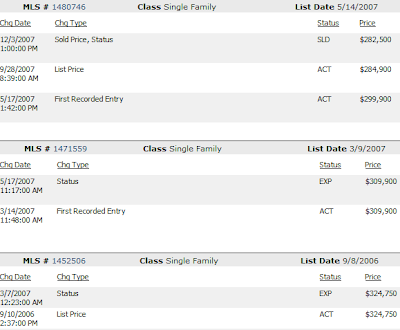We've covered how the Dane County and national real estate markets are different. Generally speaking, we're not seeing the severe price decreases that other markets around the country are experiencing. If you're interested in tracking the latest price trends, use a source that reports data specific to our market. You'll get a much better picture of our market from a source that uses local price data.
With that said, I'm a big believer that national sales volume reports are important to our market. Here's why. This graph shows national sales volume started to decrease on a year-over-year basis (noted by the red data points) in the Fall of 2005.

And this graph shows essentially the same trend for the Dane County market, with local sales volume starting to slip a little before the trend became clear at the national level.

It's a buyer's market right now because supply is high and demand is low. Supply will decrease and the market will shift when more buyers start to enter the market. When national sales do start to increase in a meaningful way, this will be a good indication that the foundation is in place for a shift toward a more balanced market. We'll check back in on the national sales figures over the coming months. In the meantime expect buyers to hold all of the cards, especially during the coming fall and winter months when the demand for housing will be predictably low.



 The July value of 94.8 was the lowest index value out of every July dating back to 2001, back when the index was started. This implies that the sales volume numbers for August and September will be light, especially when you consider how the dynamics of the market have changed over the last year. Consider these realities:
The July value of 94.8 was the lowest index value out of every July dating back to 2001, back when the index was started. This implies that the sales volume numbers for August and September will be light, especially when you consider how the dynamics of the market have changed over the last year. Consider these realities:








